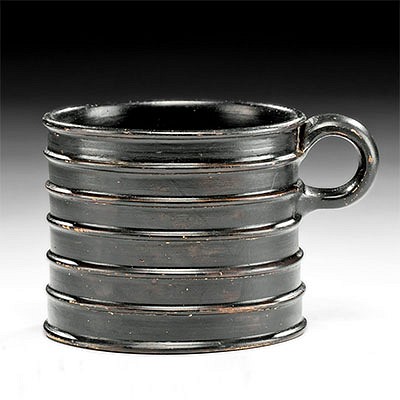Sasanian Judeo-Aramaic Pottery Incantation Bowl w/ Sol
Lot 68
About Seller
Artemis Gallery
686 S Taylor Ave, Ste 106
Louisville, CO 80027
United States
Selling antiquities, ancient and ethnographic art online since 1993, Artemis Gallery specializes in Classical Antiquities (Egyptian, Greek, Roman, Near Eastern), Asian, Pre-Columbian, African / Tribal / Oceanographic art. Our extensive inventory includes pottery, stone, metal, wood, glass and textil...Read more
Categories
Estimate:
$2,500 - $3,500
Absentee vs Live bid
Two ways to bid:
- Leave a max absentee bid and the platform will bid on your behalf up to your maximum bid during the live auction.
- Bid live during the auction and your bids will be submitted real-time to the auctioneer.
Bid Increments
| Price | Bid Increment |
|---|---|
| $0 | $25 |
| $300 | $50 |
| $1,000 | $100 |
| $2,000 | $250 |
| $5,000 | $500 |
| $10,000 | $1,000 |
| $20,000 | $2,500 |
| $50,000 | $5,000 |
| $100,000 | $10,000 |
| $200,000 | $20,000 |
About Auction
By Artemis Gallery
Mar 12, 2020
Set Reminder
2020-03-12 10:00:00
2020-03-12 10:00:00
America/New_York
Bidsquare
Bidsquare : Ancient / Ethnographic Around The World
https://www.bidsquare.com/auctions/artemis-gallery/ancient-ethnographic-around-the-world-4957
Ancient art from Egypt, Greece, Italy and the Near East, as well as Asian, Fossils, Pre-Columbian, Native American, African / Tribal / Oceanic, Spanish Colonial, Russian Icons, Fine art, much more! Artemis Gallery info@artemisgallery.com
Ancient art from Egypt, Greece, Italy and the Near East, as well as Asian, Fossils, Pre-Columbian, Native American, African / Tribal / Oceanic, Spanish Colonial, Russian Icons, Fine art, much more! Artemis Gallery info@artemisgallery.com
- Lot Description
Ancient Near East, Sasanian (Sassanian, Sasanid) Empire, Judeo-Aramaic culture, ca. 5th to mid-7th century CE. A finely preserved, wheel-thrown pottery bowl of a hemispherical form with a flat base, gradually expanding walls, a thick rim with a slanted lip, and a deep basin. The interior of the basin features a spiraling Syriac inscription, a minimalist bust of the sun god Sol within a radiating sun disc, and an abstract anthropomorphic figure to the right of the godly bust. Bowls like this example were traditionally buried face down to lure, catch, and disable demons and were typically placed underneath homes and around cemeteries. Also known as "demon bowls" or "devil-trap bowls," incantation bowls were evidently widely used; for example, nearly every excavated residence in the Jewish settlement of Nippur had one buried under or around the premises of the dwelling. Size: 6" Diameter x 2.6" H (15.2 cm x 6.6 cm)
For a stylistically similar example without a bust of Sol, please see The Metropolitan Museum of Art, accession number 86.11.259.
Provenance: private J.H. collection, Beaverton, Oregon, USA, acquired in September 2016; ex-private New York, New York, USA collection; ex-Thomas Cederlind estate collection, Portland, Oregon, USA
All items legal to buy/sell under U.S. Statute covering cultural patrimony Code 2600, CHAPTER 14, and are guaranteed to be as described or your money back.
A Certificate of Authenticity will accompany all winning bids.
We ship worldwide and handle all shipping in-house for your convenience.
#153273Minor nicks to rim, basin, and exterior surfaces, with fading to original black text, and light encrustations, otherwise intact and excellent. Light earthen deposits throughout. Text within basin is still mostly legible.Condition
- Shipping Info
-
All shipping is handled in-house for your convenience. Your invoice from Artemis Gallery will include shipping calculation instructions. If in doubt, please inquire BEFORE bidding for estimated shipping costs for individual items.
-
- Buyer's Premium



 EUR
EUR CAD
CAD AUD
AUD GBP
GBP MXN
MXN HKD
HKD CNY
CNY MYR
MYR SEK
SEK SGD
SGD CHF
CHF THB
THB
















